Select Language
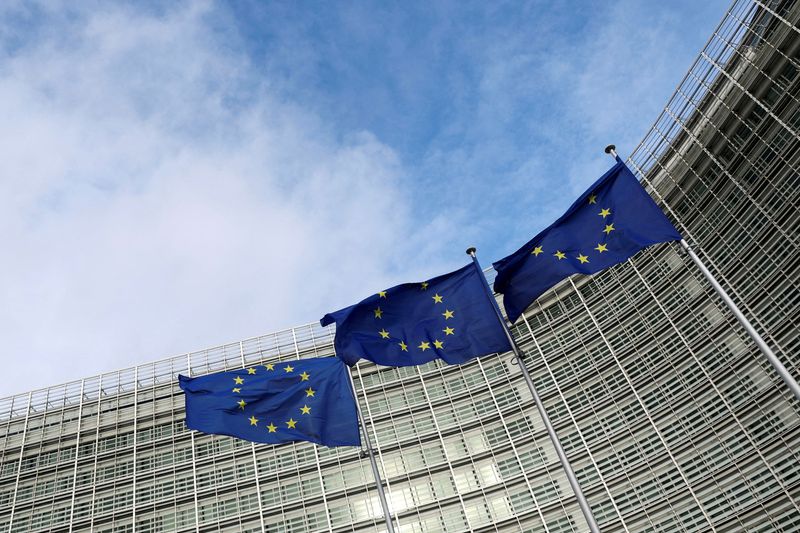
By Julia Payne and Andrew Gray
BRUSSELS (Reuters) - European Union countries agreed on a 12th package of sanctions against Russia, the European Council said on Thursday, meaning that a phased ban on Russian diamond imports among other measures will come into effect from Jan. 1.
The EU has been adding sectoral and individual sanctions since Russia's invasion of Ukraine in February 2022 in an attempt to cut off revenues and military equipment feeding Moscow's war machine.
"The European Council welcomes the adoption of the 12th package of sanctions," its concluding statements said.
While the text of the package had been agreed by all countries earlier this week, diplomatic sources said, Austria held back on giving its final approval until late on Thursday. Austria said on Wednesday while it was not opposed, the capital needed time to examine the legal texts.
However, sources familiar with the matter said the country had been attempting to have Raiffeisen Bank International, the biggest Western bank in Russia, struck off a Ukrainian blacklist in return for signing off on fresh European Union sanctions on Russia.
Raiffeisen still appears on Ukraine's list.
The new sanctions package includes a direct ban on Russian non-industrial diamond imports from Jan. 1 and a phased ban on diamond imports from third countries starting from March in alignment with the Group of Seven (G7) countries.
Other measures include tightening the proof required from companies who claim they adhere to the G7 Russian oil price cap. The package also added measures to prevent Russia from obtaining dual-use goods by making EU companies have their counterparties on certain products sign contracts prohibiting re-export to Russia.
A notification procedure for Russian citizens or entities in Russia wishing to transfer more than 100,000 euro ($109,920.00) out of the EU was also included.
($1 = 0.9098 euro)

BEIJING (Reuters) - China's new home prices fell for the fifth straight month in November, official data showed on Friday, as the sector still struggles to elbow its way out of a weak market in the face of dampened confidence in demand and investment.
New home prices fell 0.3% month-on-month after a similar 0.3% dip in October, according to Reuters calculations based on National Bureau of Statistics (NBS) data.
Prices fell at the fastest pace in seven months year-on-year, down 0.2% in November, compared with a 0.1% decline in October.
China has been ramping up measures to cushion the impact of the property downturn on its economy, but the property market has failed to stage a robust rebound.
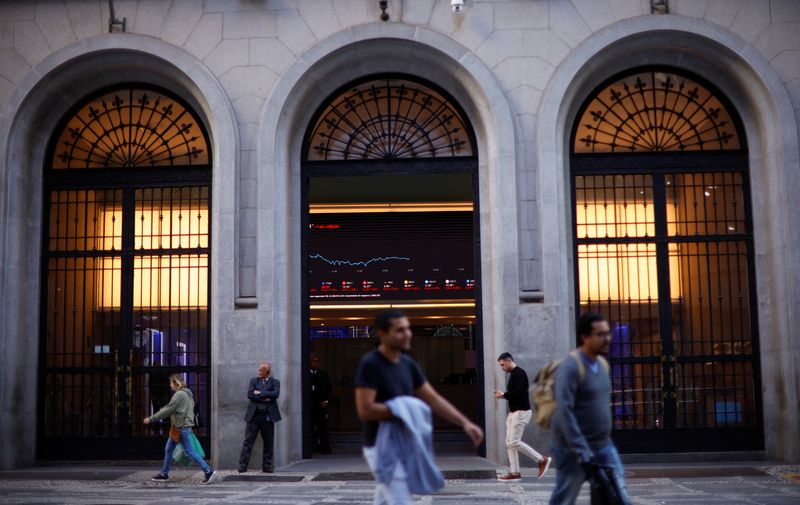
SAO PAULO/MEXICO CITY (Reuters) -Brazilian and Mexican stocks rose to record highs on Thursday, propelled by the U.S. Federal Reserve's signaling toward lower interest rates in 2024 and monetary policy decisions in both Latin American nations.
In Brazil, stocks were partially driven by the local central bank's rate cut on Wednesday evening, with board members indicating that 50-basis-point cuts will continue past its next meeting in January.
Brazil's equities benchmark index Bovespa settled up 1.06% on Thursday, reaching a new closing high of 130,842.09 points, after climbing to an intraday record of 131,259.81 earlier in the day. The previous records had been set in June 2021.
The positive session was also helped by oil firm Petrobras' shares, which were up 2.17% at close as oil prices trended higher.
Mexico's main stock index rose 3.39% to a historic close of 57,036.42 points, though it also inched even higher during trading to an intraday high of 57,077.52 points.
The index was propelled by Mexico's airport operators, a day after Grupo ASUR announced details of its 2024-2028 master development plan.
Earlier in the day, Mexico's central bank unanimously held the country's interest rate at 11.25% and pointed toward more of the same "for some time."
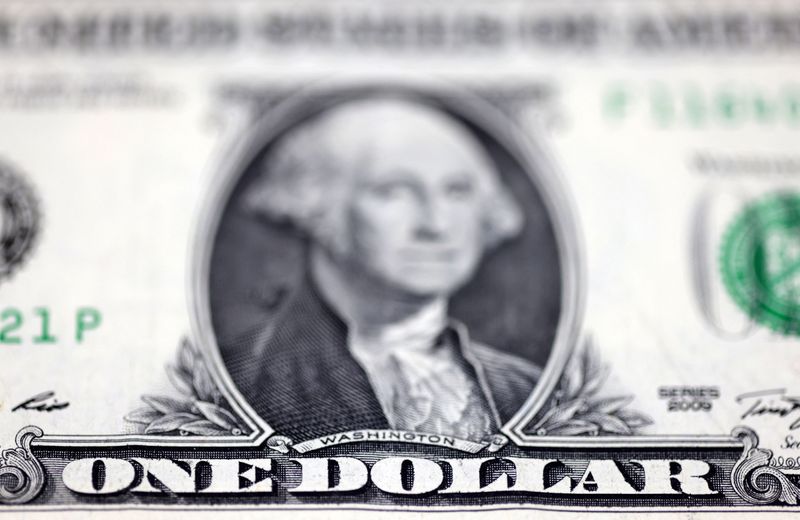
(Corrects to add "FOREX" to headline)
By Brigid Riley
TOKYO (Reuters) -The dollar dropped to a fresh four-month low on Thursday after the Federal Reserve's latest economic projections indicated the interest-rate hike cycle has ended and lower borrowing costs are coming in 2024.
The yen jumped in response, briefly breaking below 141 yen versus the greenback for the first time since late July.
Meanwhile, the Aussie and New Zealand dollar surged to new multi-month highs after Australian employment data blew past forecasts.
Fed Chair Jerome Powell said at Wednesday's Federal Open Market Committee (FOMC) meeting that the historic tightening of monetary policy is likely over, with a discussion of cuts in borrowing costs coming "into view." Policymakers were nearly unanimous in their projections that borrowing costs would fall in 2024.
"This is a huge development for markets as we head into the new year and provides much-needed clarity. And clarity in this instance meant risk-on," said Matt Simpson, senior market analyst at City Index.
The U.S. dollar index, which measures the greenback against a basket of currencies, slipped as far as 102.42, it's lowest since mid-August. It was last down 0.31% at 102.56.
The FOMC meeting will likely overshadow upcoming economic data before personal consumer expenditures data is published next week, leaving room for "further downside potential for the US dollar," Simpson said.
Markets are now pricing in around a 75% chance of a rate cut in March, according to CME FedWatch tool, compared with 54% a week earlier.
The yen continued to strengthen in the wake of the greenback's tumble, climbing to its highest since July 31 at 140.95 yen per dollar. It was last up around 1% at 141.46 yen.
The dovish FOMC meeting may have caught some traders who were bearish on yen and bullish on the dollar by surprise, prompting them to quickly unwind positions, said Masafumi Yamamoto, chief currency strategist at Mizuho Securities.
Japanese exporters who haven't yet increased hedge ratios are likely rushing to make adjustments as well, he added.
Expectations that the Bank of Japan (BOJ) could end negative interest rates at its monetary policy meeting on Dec. 18-19 have largely died down, but the BOJ could make tweaks to its statement, such as language that the bank will not hesitate to ease further if necessary, said Yamamoto.
That kind of change could "be regarded as one step toward normalisation...so that could be positive for the Japanese yen," he said.
Focus now shifts to a parade of central bank decisions, including the European Central Bank and the Bank of England (BoE), Norges Bank and Swiss National Bank.
The Norwegian central bank is considered to be the only bank that could potentially raise rates. There is also a risk the SNB could dial back its support for the Swiss franc in currency markets.
The euro rose 0.25% to $1.09015, while sterling was last trading at $1.2642, up 0.19% on the day.
The Australian dollar, meanwhile, hit over a four-month high at $0.6728 after domestic net employment jumped by 61,500 in November, compared to an increase of around 11,000 that markets had been forecasting.
The kiwi rose 1.04% versus the greenback to $0.6238, despite data showing the New Zealand economy unexpectedly contracted in the third quarter.
In cryptocurrencies, bitcoin rose 0.39% to $43,057.
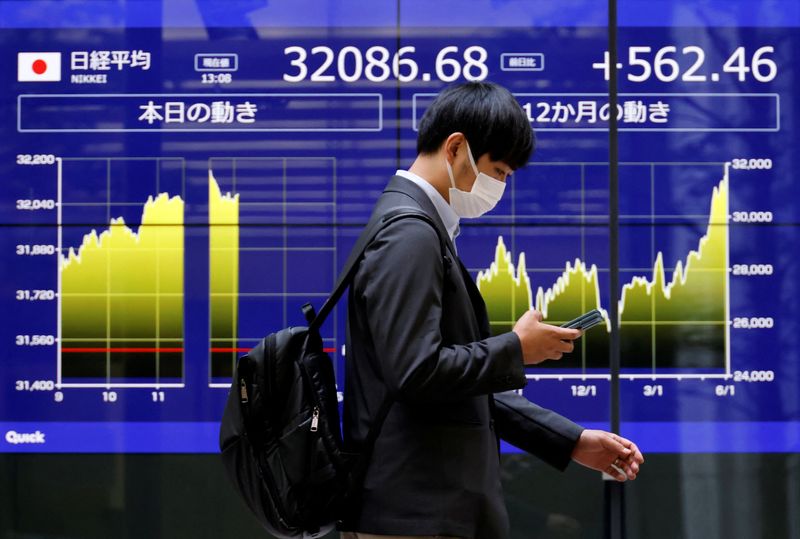
By Xie Yu
HONG KONG (Reuters) - Asian stocks broadly rallied on Thursday, after the U.S. Federal Reserve flagged the end of its tightening cycle and struck a dovish tone for the year ahead.
U.S. Treasury yields slid to a fresh four-month trough, while the dollar continued to slide.
MSCI's broadest index of Asia-Pacific shares outside Japan shot up 1.8%, its biggest one-day percentage jump in a month.
Mainland Chinese blue chips edged up by 0.2%, while Hong Kong's benchmark advanced 1.2%. Australian shares were up 1.6%.
However, Japan's Nikkei slid 0.7%, weighed down by the yen's sharp rally.
The Fed left interest rates unchanged on Wednesday and U.S. central bank chief Jerome Powell said its historic tightening of monetary policy is likely over with inflation falling faster than expected.
A near-unanimous 17 of 19 Fed officials project that the policy rate will be lower by the end of 2024 than it is now - with the median projection showing the rate falling three-quarters of a percentage point from the current 5.25%-5.50% range. U.S. fed funds futures boosted the chances of rate cuts starting as soon as in March after the Fed decision, according to LSEG's FedWatch. The market has priced in more than 150 bps of easing next year.
"It was a very aggressive pivot," said Ben Luk, global macro strategist at State Street (NYSE:STT) Asia Limited.
"The Fed has followed market expectation in terms of allowing for one more rate cut to be added into both the 2024 and the 2025 (outlooks)," he said.
That aggressive pivot will have a mixed impact in Asia, with tech shares to benefit more while markets including Japan will have a dampening effect as its currency strengthens with a weakening U.S. dollar, he added.
"Overall, the meeting was a bit more dovish than we expected," said Christian Scherrmann, U.S. economist at DWS.
"However, we would like to remind that they are not yet on autopilot to the runway and that the timing of the first rate cuts still depends on the evolution of the incoming data and, in particular, of inflation," he added.
It is a busy week for central banks, with the European Central Bank, Bank of England and Swiss National Bank all announcing policy decisions on Thursday. The Bank of Japan's turn comes on Tuesday.
U.S. stocks surged to a sharply higher close on Wednesday and benchmark Treasury yields slid to their lowest level since Aug. 10.
U.S. stock futures, the S&P 500 e-minis, were up 0.4% on Thursday, while the 10-year Treasury yield pushed down further to as low as 3.9845%, breaking below the psychological 4% mark.
The U.S. dollar index, which measures the greenback against a basket of currencies, fell a further 0.25% to 102.62.
The euro gained 0.2% to $1.0899.
The yen sat significantly higher, with the dollar sliding 0.7% to 141.82 yen.
Spot gold was up 0.23% at $2,030.99 per ounce, after rising 2.4% on Wednesday.
Oil prices rose, extending gains from the previous session.
Brent futures rose 23 cents, or 0.31%, settling at $74.49 a barrel by 0345 GMT. U.S. West Texas Intermediate crude rose 11 cents, or 0.16%, and settled at $69.58 a barrel.
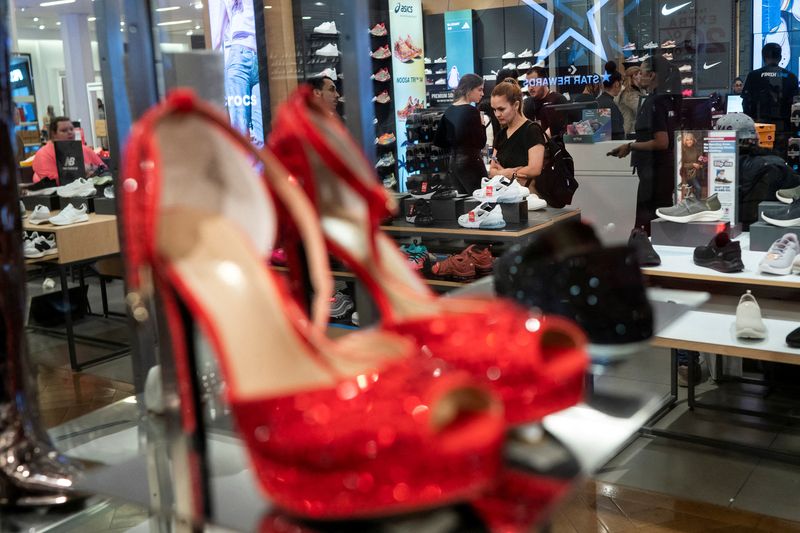
By Mimosa Spencer
PARIS (Reuters) - Early holiday shopping season discounts from high-end fashion retailers like Bergdorf Goodman on New York's Fifth Avenue raised concern that a lacklustre Christmas could lead to inventory gluts – potentially dragging labels into a discounting spiral that would cheapen their image.
The latest U.S. credit card data from Barclays released on Wednesday showed that spending on luxury goods remained negative in November, down 15% year-on-year after a decline of 14% in October.
That performance "doesn't bring much optimism" for the fourth quarter, with the weak trends in the U.S. reason for caution about the performance of luxury brands over the period, Barclays analysts said.
Credit card data from Citi, also released on Wednesday, showed purchases of luxury fashion were down 9.6% year-on-year in November, after an 11.4% decline in October, with steeper declines in department stores and online, down 13% in November year-on-year.
Retailers entered the season with too much inventory, said Olivier Abtan, consultant with Alix Partners, noting that last year’s purchasing orders were made before the sector began to cool off after a months-long, post-pandemic splurge.
“They’ve already begun the season with overstock, compared to normal levels,” said Abtan.
Share prices of LVMH, Kering (EPA:PRTP) and Burberry were down 12%, 23% and 33%, respectively, since early August, while shares in e-commerce operator Farfetch (NYSE:FTCH) have lost the bulk of their value and were down 90%.
“We know that the U.S. consumer is going to keep being reasonable, and retailers have to adapt,” said Caroline Reyl Head of Premium Brands at Pictet Asset Management, which owns shares of LVMH.
Conflict in the Middle East added geopolitical uncertainty to a luxury industry outlook already clouded by inflation, with shoppers in the U.S. and Europe tightening their purse strings while expectations for a strong post-pandemic rebound in China were derailed by a property crisis.
The lower spending comes at the all-important end-of-year season, with November and December accounting for 25% of annual sales.
“It’s not going to be a good Christmas for luxury brands,” said Abtan.
But department stores could feel the pinch from slowing demand for the next six to 12 months, predicted Citi analysts, a potential challenge for luxury brands generating a significant amount of sales outside of their own networks of boutiques.
Department stores -- particularly in the U.S. -- are known for aggressive discounting, drawing shoppers to stores, but offering lower prices can erode the attractiveness of fashion brands and encourage people to hold back for future deals.
Leading global brands like Hermes, privately owned Chanel and LVMH's Louis Vuitton and Dior maintain a tight grip on retail operations, selling mainly through their own stores which allows them to avoid discounts and fully control their brand image.
Such direct-to-consumer sales by high-end labels have increased from 40% of the personal luxury goods market in 2019 to 52% in 2023, according to Bain.
Analysts say fashion houses are overall much better equipped than during the crisis of 2008 and 2009, when the spending slowdown was sudden.
Since the previous crisis, labels have applied artificial intelligence to predict sales volumes and adjust production, while they have also fine-tuned their proportion of seasonal and more permanent styles.
The end of this year will be “a season for bargain seekers but not the markdown season of the century," predicted luxury consultant Mario Ortelli.
Technology has played a "decisive role" to avoid overstock issues, said Mathilde Haemmerle, partner at Bain. She cites macro indicators, historical sales of similar products, trends scraping on social networks as variables examined through AI to better anticipate sales volumes.
The bigger labels are also more agile, having cut their development time in half over the past 15 years by streamlining production and regrouping certain stages of production, according to Abtan.
“That’s a game changer,” said Abtan.
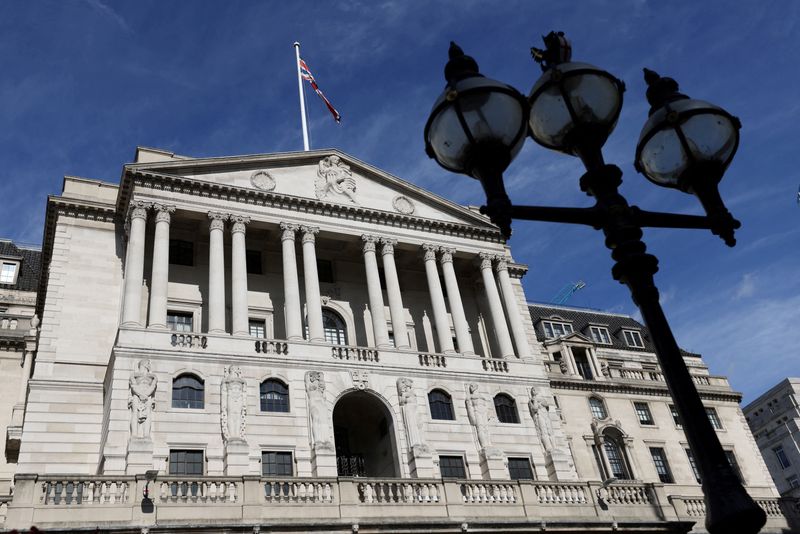
By David Milliken
LONDON (Reuters) - The Bank of England looks set to keep interest rates at a 15-year high later on Thursday, but investors are most focused on whether policymakers will push back against growing market bets on a string of rate cuts next year.
The BoE has held its main interest rate at 5.25% since August, after 14 back-to-back rate rises starting in December 2021, and Governor Andrew Bailey has repeatedly said rates will need to stay high "for an extended period".
With other central banks suggesting that cuts to borrowing costs are coming, the BoE has stuck to its hard line against such talk for Britain.
While inflation is down from the 41-year high of 11.1% which it hit in October 2022, at 4.6% it is still more than double the BoE's target, higher than in other rich countries, and forecast to fall only gradually over the next two years.
However, data this week has come in weaker than expected, raising the possibility of a faster fall in inflation and that the BoE may have to change course sooner than it has suggested.
Britain's economy shrank by 0.3% in October, the first drop since July and one which suggests that it - like some countries in the euro zone - is at risk of recession.
Wage growth also slowed more than expected - though at 7.3% in the three months to October, it is still close to the record high of 7.9% set over the summer and remains the principle source of the BoE's inflationary angst.
The central bank has finance minister Jeremy Hunt's Nov. 22 budget update to consider too, which laid the ground for tax cuts in the run-up to a national election expected in 2024.
Financial markets on Wednesday priced in a full percentage point of cuts by the BoE during 2024, with the first quarter-point reduction probably taking place in May.
But this week's soft economic data may not change the BoE's view that returning inflation to its 2% target will be a slow job.
Last month the central bank set out a gloomy prognosis for Britain's economy: growth would be zero next year, but mismatches in the labour market created in part by COVID-19 and Brexit left it more vulnerable to persistent inflation than the United States or the euro zone.
"Markets are going - 'They've got to pivot'. I still think that's premature and in some ways they have to be even more gung-ho about keeping rates in restrictive territory," said Hetal Mehta, head of economic research at British investment manager St James's Place.
FED, BOE, ECB
The BoE announcement at 1200 GMT will be sandwiched between those of the U.S. Federal Reserve, which on Wednesday signalled lower borrowing costs for 2024, and the European Central Bank, which is also expected to keep rates on hold at 1315 GMT.
Markets see the Fed and ECB cutting interest rates earlier and faster than the BoE next year, largely because inflation is much nearer target in both the United States and the euro zone.
The BoE has limited opportunity to fine-tune market rate expectations, as this month it has no quarterly forecast update or news conference scheduled.
Indeed, some BoE policymakers have been making the case that rates still need to rise.
Three of the BoE Monetary Policy Committee's nine members voted for a quarter-point rate rise last month, and according to a Reuters poll of economists last week, they are likely to do so again.
The only BoE policymaker to discuss the timing of a rate cut has been Chief Economist Huw Pill who shortly after November's decision said the market expectation then for a first rate cut in August 2024 "doesn't seem totally unreasonable".
Two days later, Bailey said it was "really too early" to discuss when rates might be cut.
"The trend we've seen lately is that central bankers want to carry on talking tough until they are ready," said Isabel Albarran, Investment Officer at Close Brothers Asset Management. "But it's quite common that they cut rates at a more rapid clip than they raise them."
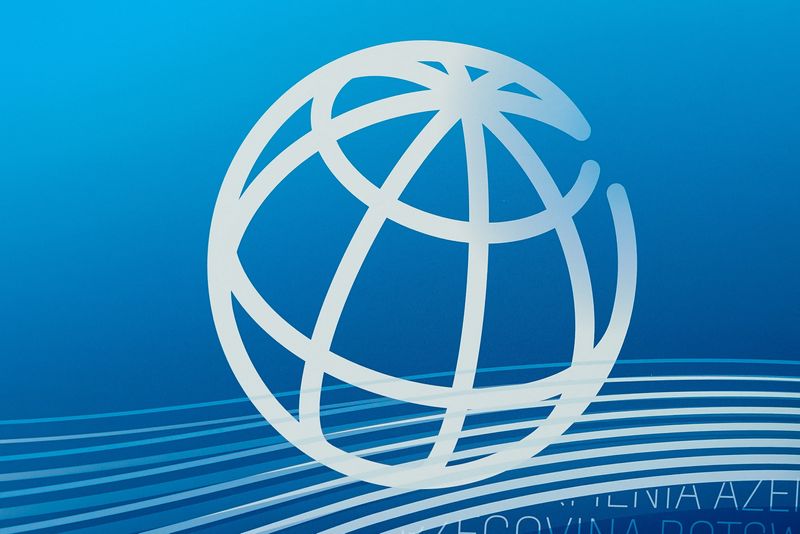
By Andrea Shalal
WASHINGTON (Reuters) - Developing countries spent nearly half a trillion dollars to service their external public and publicly guaranteed debt in 2022, draining funds from critical health, education and climate needs, and putting the poorest countries at increasing risk of "tumbling into a debt crisis," the World Bank said on Wednesday.
In its latest International Debt Report, the bank said the debt-service payments - including principal and interest - rose 5% to a record $443.5 billion from a year earlier amid the biggest surge in global interest rates in four decades. It said the payments could shoot 10% higher in 2023-2024.
The 75 poorest countries were hardest hit, said the report, now in its 50th year. Their external public debt service payments reached a record $88.9 billion in 2022 and would surge by 40% over the 2023-2024 period. Their interest payments alone had quadrupled since 2012 to $23.6 billion, it said.
"This is the decade of reckoning," World Bank chief economist Indermit Gill told Reuters in an interview. "Record debt levels and high interest rates have set many countries on a path to crisis,” he said, warning that continued high interest rates would push more developing countries into debt distress.
Gill said he was paying close attention to Ethiopia's discussions with bondholders after a breakdown in talks over how long to extend the maturity and spread out repayments of its single $1 billion international bond maturing in December 2024.
"Ethiopia is like a canary in the coal mine," he said. "It's the biggest country that would default. That's an important one. It's one of the five biggest economies in sub-Saharan Africa."
Ethiopia is careening toward default after it said last week it could not pay a $33 million bond coupon due on Monday.
Gill told reporters that steep debt servicing costs, high debt burdens and slowing growth in many countries raised concerns about a new debt crisis and the risk of contagion, but said he does not view that risk as "imminent."
He said the situation would remain difficult for developing countries, with past experience indicating that interest rates were unlikely to come down "anytime soon" especially since supply shocks could jack up inflation again quickly.
Gill called for "quick and coordinated action" by debtor countries, private and official creditors, and multilateral financial institutions to improve transparency, develop better debt sustainability tools, and speed up debt restructurings.
African countries faced "another lost decade," Gill told Reuters, noting they had seen no per capita income growth since 2014 on average.
The report said one in every four developing countries was now priced out of international capital markets and there had been 18 sovereign debt defaults in 10 countries over the past three years, more than in the past two decades combined.
Debt service payments consumed an ever-larger share of export revenues, with some countries now "just one shock away from a debt crisis," Gill wrote in the report, noting that about 60% of low-income countries already in or at risk of debt distress. Domestic debt levels were also high in countries like Argentina and Pakistan, increasing risks.
Countries that deferred making principal and interest payments under the Group of 20's Debt Service Suspension Initiative (DSSI) adopted during the COVID pandemic also faced additional costs now that those payments were due, the bank said, although exact data won't be reported until 2024.
The report noted private capital had largely withdrawn from developing countries, favoring higher interest rates in advanced economies. Private creditors received $185 million more in principal repayments than they disbursed in loans, the first time that was seen since 2015. Overall, there was a net outflow of $127.1 billion from low- and middle-income countries to bondholders, compared to an average inflow of $202 billion from 2019-2021.
The World Bank and other multilateral creditors, helped fill the gap, providing a record $115 billion in new financing for developing countries in 2022, the report said.

By Laura Matthews and Carolina Mandl
NEW YORK (Reuters) - U.S. Treasury market participants hope the securities regulator will heed pleas for a careful phase-in of a rule it is due to finalize on Wednesday that would force more central clearing of transactions in a seismic overhaul of the $26 trillion market.
The top five Securities and Exchange Commission (SEC) officials are scheduled to vote at 10:00 a.m. ET on the rule. It was proposed over a year ago in a broad effort to boost Treasury market resilience during liquidity crunches, when buyers and sellers find it hard to complete transactions.
If adopted, the reforms would mark the most significant changes to the world's largest bond market, a global benchmark for assets, in decades.
"This is going to significantly change the Treasury market landscape," said Angelo Manolatos, macro strategist at Wells Fargo Securities, citing "a lot of costs."
The rule could also potentially increase systemic risks by concentrating risk in the clearing house, he added.
A central clearer acts as the buyer to every seller, and seller to every buyer. Overall, just 13% of Treasury cash transactions are centrally cleared, according to estimates in a 2021 Treasury Department report, referring to the outright purchase and sale of those securities.
The draft rule, which applied to cash Treasury and repurchase agreements, was partly aimed at reining in debt-fueled bets by hedge funds and proprietary trading firms. These firms have accounted for a growing chunk of the market over the past decade but are lightly regulated, allowing few insights into their activities.
Many details about the final rule remain unknown, including the effective date, whether it would be adopted in phases, the scope of instruments, and parties included.
Advocates for central clearing, including the SEC, say the rule makes markets safer, while critics say it adds costs and are concerned about the possibility of a hurried phase-in.
"It is critical that policymakers do not blindly tinker with (the Treasury market's) underpinnings," wrote Jennifer Han, head of Global Regulatory Affairs at the Managed Funds Association in a Dec. 4 letter.
The MFA stressed the market infrastructure needs to be more fully developed and recommended improving the way clients access clearing.
Hedge fund and market maker Citadel said in a comment letter that the clearing requirement for cash transactions should be expanded beyond hedge funds to include a broader range of investors, leveling the playing field.
Another key issue is whether the SEC will require minimum "haircuts" on collateral pledged against trades, which would raise trading costs and potentially reduce market liquidity. A haircut is a percentage deduction from the collateral value.
Industry practice suggests that a large share of hedge funds trading in repo markets put up no haircut, suggesting that they are fueling activity using enormous amounts of cheap debt.
The Depository Trust and Clearing Corporation's (DTCC) FICC subsidiary clears Treasuries and could be tasked to come up with rules.
"The implementation timeline is quite important," said Gennadiy Goldberg, head of US rates strategy at TD Securities USA. "And what are the haircuts? Those are the two big questions that the market is going to be asking."
STEADYING THE MARKET
The rule is part of a series of reforms designed to boost Treasury market resilience following liquidity crunches. In March 2020, for example, liquidity all but evaporated as COVID-19 pandemic fears gripped investors.
"While central clearing does not eliminate all risk, it certainly does lower it," said SEC Chair Gary Gensler in the 2022 press release announcing the proposed rule.
The DTCC said in a comment letter that during times of market stress, market participants submit a greater volume of transactions for clearing to limit their credit risk.
Jason Williams, director of U.S. rates research at Citi, said there were pros in having additional margin in the system but balancing that are higher costs.
"It's going to be an interesting juggling act," he added.
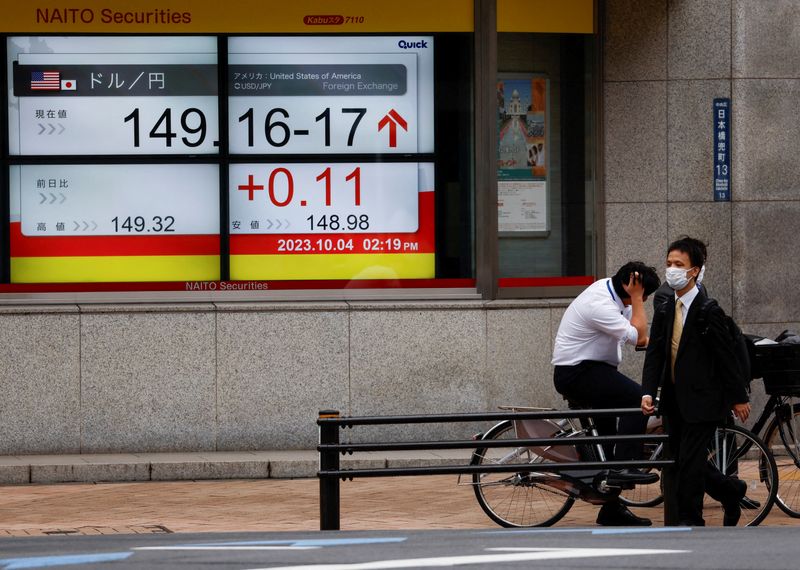
By Rae Wee
SINGAPORE (Reuters) - Asian shares were mixed on Wednesday, while oil prices slid to six-month lows as traders waited for the year's final policy decision from the Federal Reserve and clues on whether the central bank will cut rates next year.
Brent bottomed at $72.75 a barrel, its lowest level since late June, while U.S. crude slid to $68.14 a barrel on concerns of softening demand and oversupply. [O/R]
The Fed takes centre stage on Wednesday, where it is due to announce its rate decision at the conclusion of its two-day policy meeting.
Market expectations are for policymakers to keep rates on hold, unfazed by a reading on U.S. inflation that came in largely in line with consensus.
That leaves focus on Powell's press conference and the Fed's dot plot of future policy trajectory.
"The December FOMC is poised to be short on action, given the consensus for no rate hike, but may nevertheless be big on drama," said Vishnu Varathan, head of economics and strategy at Mizuho Bank.
"In particular, as a refreshed dot plot accompanied by revisions to the summary of economic projections that offer ample fodder to interpret the propensity for a Fed pivot... as well as confidence around a soft landing.
"But the growing danger is that the Fed's inclination may be to calibrate expectations for a pivot."
Nonetheless, investors continue to bet that the Fed is all but certain to begin easing monetary policy in 2024, and are pricing in a 75% chance the first cut could come as early as May, according to the CME FedWatch tool.
Those expectations kept market sentiment buoyant, lifting U.S. stocks to fresh 2023 highs on Tuesday. [.N]
MSCI's broadest index of Asia-Pacific shares outside Japan however failed to extend the rally and edged 0.2% lower, though moves were subdued ahead of the Fed decision,
Japan's Nikkei bounced 0.6%.
In China, blue-chip stocks fell nearly 0.5% while Hong Kong's Hang Seng index slid 0.8%, as investors continue to look for clues for further policy support from Beijing.
U.S. bond yields hovered near their recent lows, with the two-year Treasury yield last at 4.7245%, having earlier in December hit a nearly six-month trough of 4.5400%.
The benchmark 10-year yield steadied at 4.2006%, near its lowest in three months. [US/]
In the currency market, the U.S. dollar was on the defensive and stood at $1.2558 on the British pound.
British wage growth slowed by the most in almost two years, data on Tuesday showed, though pay was likely still rising too fast for the Bank of England to relax its tough stance against cutting interest rates.
The greenback meanwhile last bought 145.48 yen.
While investors look for signs of rate cuts next year across major central banks, over in Japan, many are betting for the Bank of Japan (BOJ) to shift away from its ultra-loose monetary policy.
"We expect the BOJ to stay steady at the December meeting," said analysts at Maybank in a note.
"We still think they will only exit (negative interest rate policy) and (yield curve control) in Q2 2024 after a strong spring wage negotiations' result."
In commodity markets, gold was kept pinned near a three-week low and was last at $1,980.79 an ounce.

